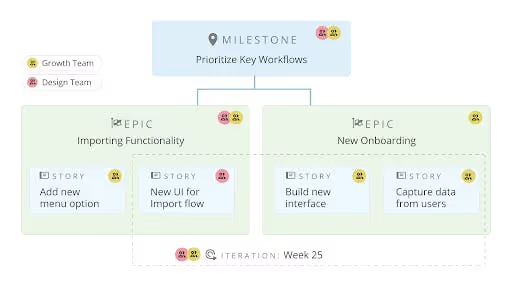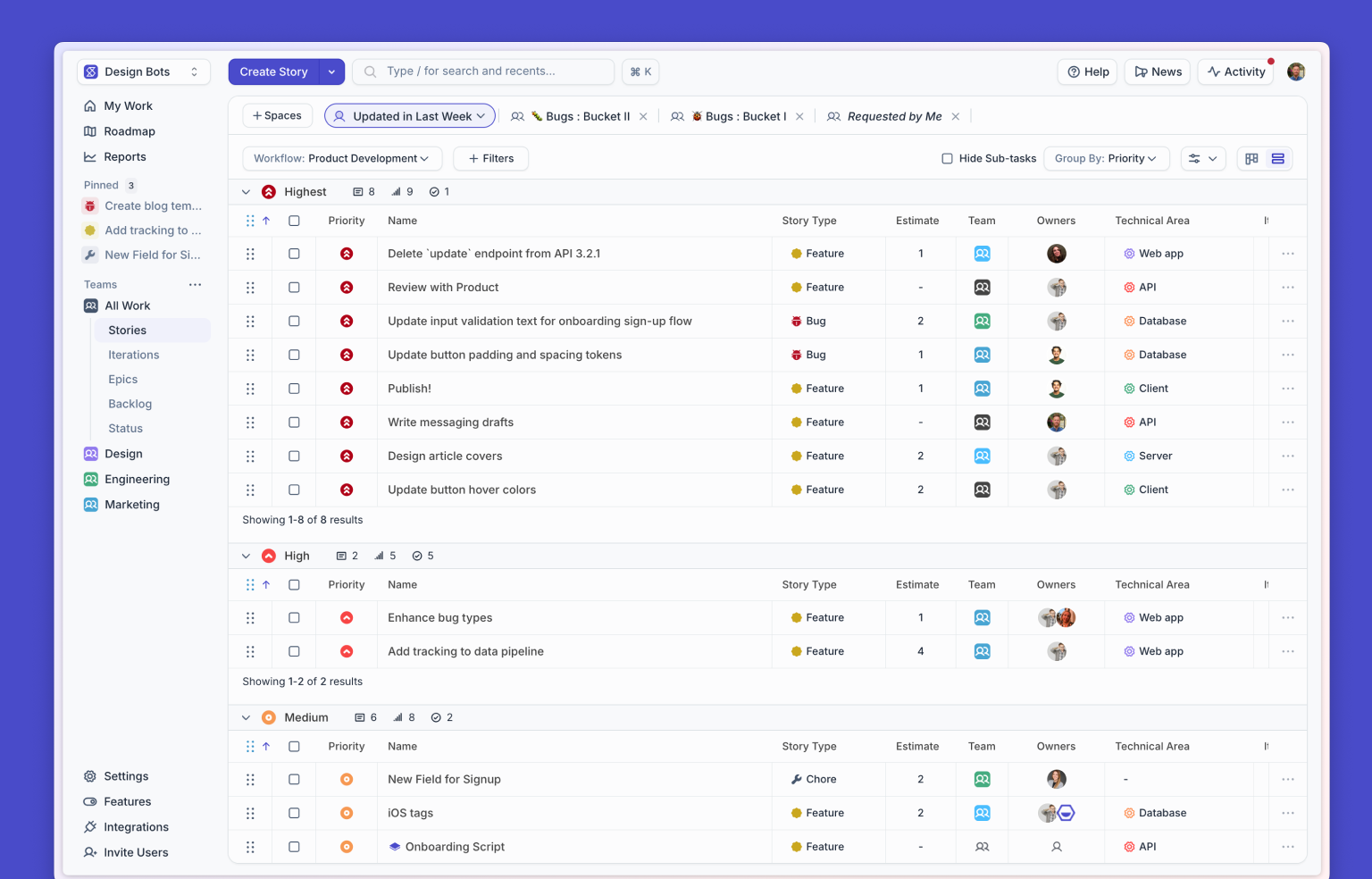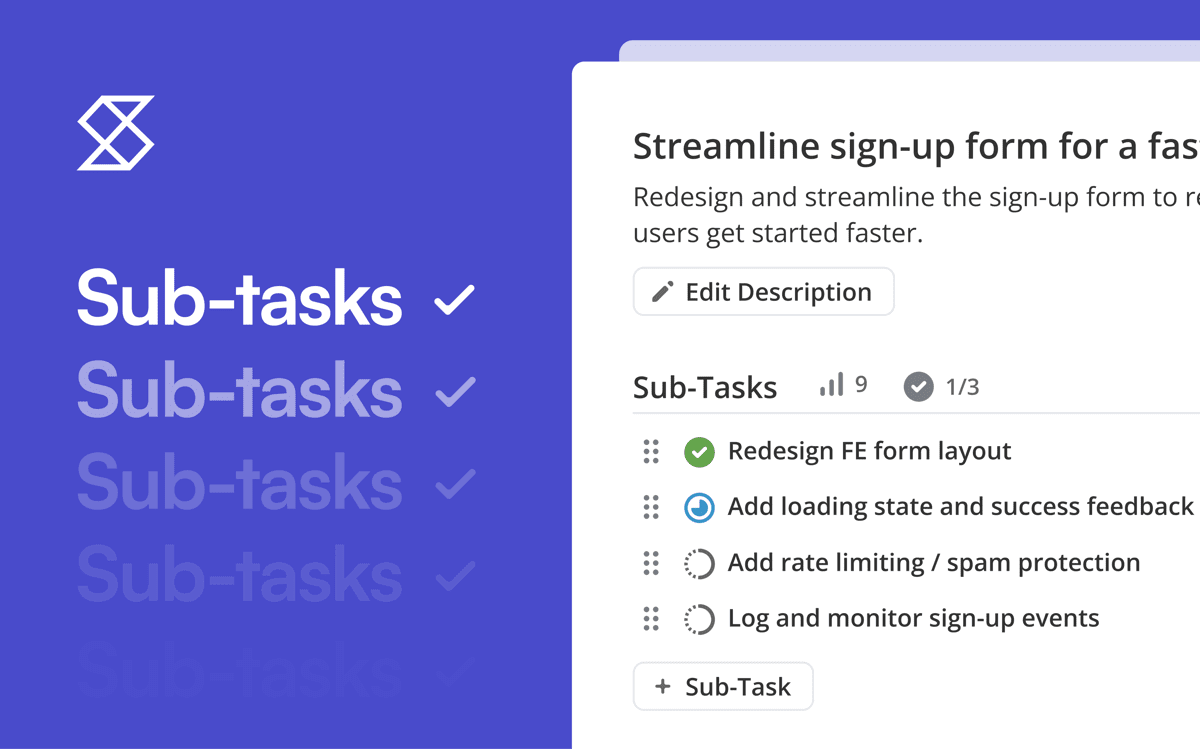Welcome to Shortcut! Shortcut is project management without all the management, built by our software team for your software team. We help you plan, collaborate, build, and measure success. Speaking of success, we want to make sure that you’re set up for... wait for it…
Wait for it a little bit more…
Wait one more second...
Success.
That’s why we’ve created this Ultimate Setup Series.
First, use the visual below to help...wait for it...visualize how you’ll choose to set up your teams and processes in a way that makes the most sense for your particular organization.
Far be it from us to explain a visual before you look at it, but ultimately your Team is made up of People, the Work they’re doing, and the Process they use to get that work done.

But what do all these terms mean? Let’s take a closer look at these building blocks of Shortcut to better understand how they relate to each other.
Story
A Story represents an individual piece of work. This work is to be completed in a Workflow and can be broken down with subtasks.
Stories are displayed kanban-style and are organized by Workflow State. Customize your view on the left hand side of the Stories page.
Stories are the foundation of your work in Shortcut. You can even use and create your own templates to make Story creation even easier.
Learn more: Contents of a Story, Details of a Story
Epic
An Epic is a collection of Stories representing a larger body of work (like a feature).
Epics contain Stories from different Teams and Workflows, making them a great way for cross-functional teams to collaborate.
For example: a new feature might involve people from product, design, engineering, and marketing all coordinating and collaborating together. Each user creates their own Stories (individual pieces of work) that roll up into one Epic (larger body of work).
From the Epic page, filter and adjust your view so that you see the Epics most relevant to you.
Learn more: Working with an Epic
Milestone
A Milestone is a collection of Epics representing a larger initiative with a common goal.
Milestones are the highest level of organizational hierarchy in Shortcut and represent a large amount of work that could take a month or a quarter or longer to complete.
This structure breaks up work into smaller chunks (Stories & Epics) while giving a clear way to track progress toward large goals.
Learn more: The Individual Milestone Page

Iteration
An Iteration is a time-boxed period of development for a collection of Stories that can span multiple Epics and Workflows, and can be used to track sprint cycles.
Learn more: The Iteration detail page
Roadmap
A Roadmap is a timeline with adjustable dates to help visualize and track the progress of Milestones and Epics.
A Roadmap is an easy way to communicate with your team and leadership on what work has been planned and what work is in progress. This zoomed-out view makes it easier to provide and share updates when things change, identify bottlenecks, and celebrate successes.
Learn more: Roadmap
Team
A Team represents a cross-functional squad, or any other group of users who collectively own Stories, Epics, and Iterations.
The Teams feature provides the customizable structure needed to organize users.
Learn more: Teams in Shortcut, Teams <> Workflows
Workflow
A Workflow is a set of States customized by your organization as the process through which Stories and Epics move from creation to completion.
Workflow States allow you to track progress toward work completion with the help of kanban boards. A Workflow can be customized specifically to fit each Team’s process.
There is a many-to-many relationship between Teams and Workflows, so a Team can have access to several Workflows and vice-versa.
Learn more: Managing Your Workflow States
Every organization is different, and every setup will be different. We won’t tell you what to do - unless you want us to! - but we will continue to make resources and best practices readily available, like this blog series. In the meantime, visit our help center or join our community. Or, to learn how other organizations are successfully using Shortcut, check out our customer stories.
Brand new to Shortcut? Start using us for free by signing up here.

















%20(788%20x%20492%20px)%20(1).png)
.png)

